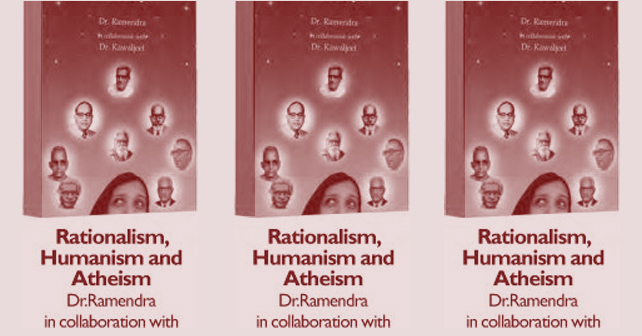Prof.A.Ayyasamy
It has been flashed in the papers that the Narendra Modi government is going to embark on another feat, which is to install the world’s tallest statue. It is going to be that of the Maratha hero Shivaji. Why, of all the figures which embellish the pages of Indian history, Shivaji, one might ask. The Sangh parivar feels that Shivaji, who fought bitter battles against the Mughal emperor Aurangazeb can be showcased as a Hindutva image. But, people who are well versed with history will know that Chatrapati Shivaji, before becoming Chatrapati, had to spend an agonizing time, caught in the devilish web of brahminical forces, which stood in the way of his declaring himself as a monarch, quoting their scriptures, which nurtured dissention and inequality. All this was done by the Brahmin priests of those days, who were the forerunners and predecessors of Sangh Parivar.
The entire world knows about the Maratha chieftain Shivaji’s valiant fight against the Muslim invaders and his ultimate victory. But not so many know that he had to face yet another enemy more formidable, more determined, more influential, better entrenched, extremely wily and utterly devoid of any scruples. Sivaji’s valour, prowess, knowledge, wisdom, intelligence, patriotic fervour and political strategy were totally nullified in the presence of this enemy- namely, Hinduism, or, to put it more precisely, Brahmin imperialism, as Swami Dharma Theerthaji Maharaj puts it in his “Menace of Hindu Imperialism” (1941), a copious and well-researched work on the topic.
No one doubts the greatness, sincerity, single-minded pursuit or dedication of Shivaji. He was responsible for the awakening of the Maratha masses of his days from their prolonged stupor and complacency. He was the symbol of the Maratha renaissance. With his learning, sagacity and towering personality he was able to give a new impetus to popular aspirations of his days and establish himself as the undisputed leader of all classes of people, and take them towards a new horizon. People were willing to give any price, and make any sacrifice to safeguard their land, under the enlightened leadership of Shivaji Maharaj, as he was affectionately called. As a result, many a battle was won, and many a fortress fell. The well orgainsed Muslim army was successfully taken on by a band of dedicated Maratha warriors.
“.loyalty to Hinduism would not qualify Shivaji to become a king. He found to his dismay that some of his trusted lieutenants who had fought side by side with him in the prolonged struggle subscribed to the view set forth by the priests. They honestly thought that Sivaji could not, and hence should not, be crowned as a king and rule a kingdom he had founded with his valour and wisdom.”
Shivaji had founded an empire with the strength of his sword. The Maratha people were willing to be led by this hero, whom they considered their saviour. Shivaji had virtually become a monarch. All that remained was the mere formality of being crowned as one. A mere formality, it would have seemed. Alas, it was not to be so. It was yet another struggle for Shivaji, more taxing and more demanding. The Brahmin priests of the days raised a serious objection to Shivaji’s getting crowned.
Surprisingly, even the generals who had fought side by side with Shivaji in the fields, could not digest the idea of his being crowned as a king, They were not prepared to accept his superiority in the royal court, because, the religious lore they had been indoctrinated with, puts a Sudra at the lowest stage in the caste system. He was not born of a royal lineage. He was a farmer, a Sudra, a person belonging to the fourth caste who was not supposed to own any property. All Hindu scriptures have unequivocally laid down that only a Kshatriya was born to rule. A Sudra was born to serve. If he were to rule a kingdom, it would invite heaven’s wrath.
No, it was a sin even to think of such an arrangement. Attempts made by some loyal and well-meaning ministers of Shivaji to get the coronation sanctioned by the chief priest of the days, Gaga Bhatta of Varanasi, renowned for his mastery of the scriptures and knowledge of Hinduism boomeranged. He would not even consider such a proposition. Imagine this happening to Shivaji who had been a pious and orthodox Hindu since his childhood. Being an orthodox Hindu meant having implicit faith in the scriptures and cherishing a respect for the priestly class, the Brahmins. Sivaji’s guru was Swami Ramdas, a venerated Brahmin of those days, whose avowed mission was the preservation of Sanatana Dharma, the traditional Hinduism which sanctioned, among other things, the caste system.
Even this loyalty to Hinduism would not qualify Shivaji to become a king. He found to his dismay that some of his trusted lieutenants who had fought side by side with him in the prolonged struggle subscribed to the view set forth by the priests. They honestly thought that Sivaji could not, and hence should not, be crowned as a king and rule a kingdom he had founded with his valour and wisdom.
Shivaji, who was a terror to the Muslim invaders, was undone by Hinduism whose cause he was longing to serve. He realized that a section of his own people, who were even willing to die for him, were reluctant to live under his leadership as a crowned monarch. They could be set against him by clever manoeuvring. The Brahminical forces, without lifting even as much as a stick, made Shivaji shudder in his shoes and forced him to eat a humble pie. He was put to such humiliation, which even his worst Muslim enemies would not have thought of. Shivaji had to come to a compromise with them.
The compromise reveals the hollowness of the Hindu doctrines and the rank hypocrisy of the priests, the custodians of Hinduism. By way of expiation to wash away his sin of low birth, Shivaji had to sumptuously feed and clothe hundreds of priests and their families, a total of 50,000 men, women and children for four months, besides giving them costly presents. Gaga Bhatta alone had to be given a huge sum of one lakh of rupees. The entire exercise cost Shivaji a huge sum, the estimate of which varies according to different historians, the lowest figure being fifty lakhs of rupees, and the highest seven crores. According to Jadunath Sarkar, another historian, on the appointed day, Shivaji was invested with the sacred thread and Gayatri mantra was chanted, actually mumbled, so that it would not fall into Sivaji’s ears and get polluted! The next day Sivaji who weighed 70 kgs was weighed against seven metals including gold and silver and various other materials, which were all distributed among brahmins. At the end of all this, the priests were imaginative enough to invent a royal genealogy making him out a descendent of the Rajput rulers.
Did Gaga Bhatta and his minions really believe in the scriptures, which they were quoting with a flourish? If there was an injunction on Shivaji’s enthronement, they should have enforced it. But, no, they had to find a loophole. They had to extract as much of wealth from Shivaji as possible and then anoint him as a royal personage. Was this not duplicity? Was this not exploitation?
It is this Shivaji who is going to be showcased as the symbol of militant Hindutva, the very philosophy which was responsible for his undoing and made him go on his knees. Do the present day Hindutva forces want to expiate, through this act, for the injustice heaped upon the warrior by their fore fathers centuries ago? Are we going to permit these diabolical forces to get away with it?





